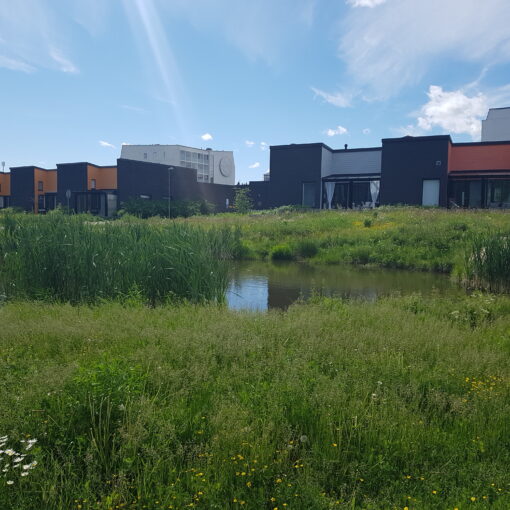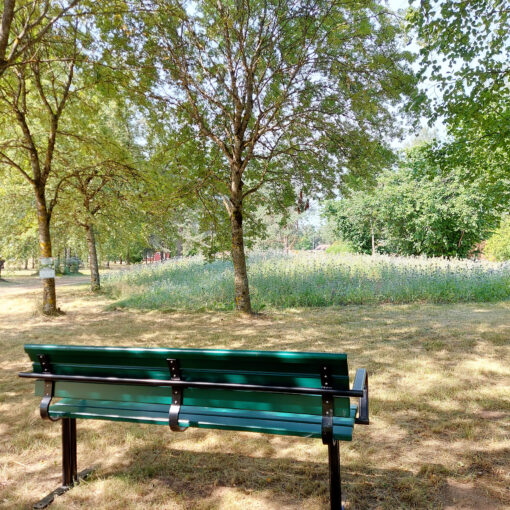Himalayan balsam, classified as an invasive introduced species, spread widely across the Vehkalampi park in Jyväskylä after the area was thinned. However, the area is too large for weeding and too scrubby and split by ditches for mowing, so a creative solution was found: sheep were brought into the area to control the spread of Himalayan balsam.
Invasive introduced species harm nature, health and the economy
Himalayan balsam is particularly problematic because a dense stand of the plant can suppress other vegetation in its habitat and prepare a suitable habitat for the offspring of the following summers. In addition, the seedlings are able to survive a late frost, and even pulling them out does not necessarily stop the growth of Himalayan balsam.
Controlling Himalayan balsam is part of Finland’s largest and most ambitious project focusing on mapping, controlling and raising awareness of invasive introduced species, the VieKas LIFe project. Projects focusing on controlling introduced species are important because invasive introduced species are harmful to nature, health and the economy. As the climate warms, they will have an even greater impact.
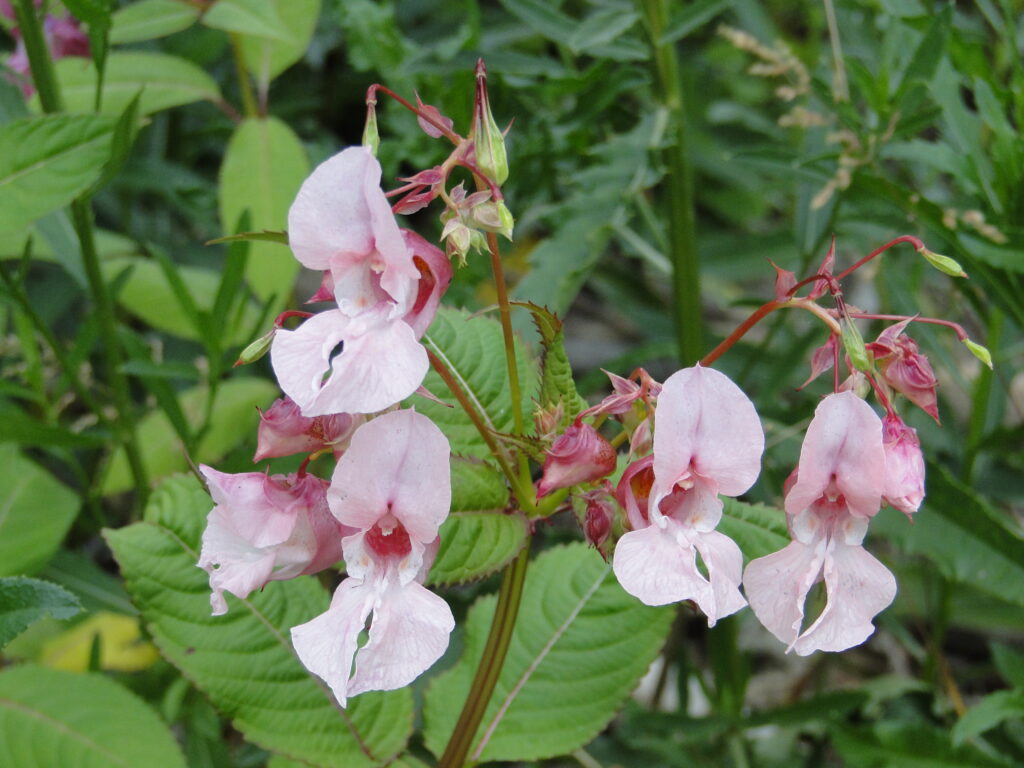
Sheep are effective in controlling introduced species
Sheep were selected to control the spread of Himalayan balsam because the area is suitably sized and sufficiently lush for sheep. Four pastures were built in the park and the densest shrubs were cleared before the sheep arrived. During the grazing seasons, the sheep are moved from one pasture to another several times. The number of sheep varies depending on how much there is to eat in the area.
The first grazing season started in May 2019. Initially, 60 sheep were brought into the park. They ate the lush undergrowth and Himalayan balsam over a couple of months, after which the herd was reduced to 20 sheep. Already in the first summer, the residents welcomed the sheep with joy, and about 30,000 people visited the park during the summer.
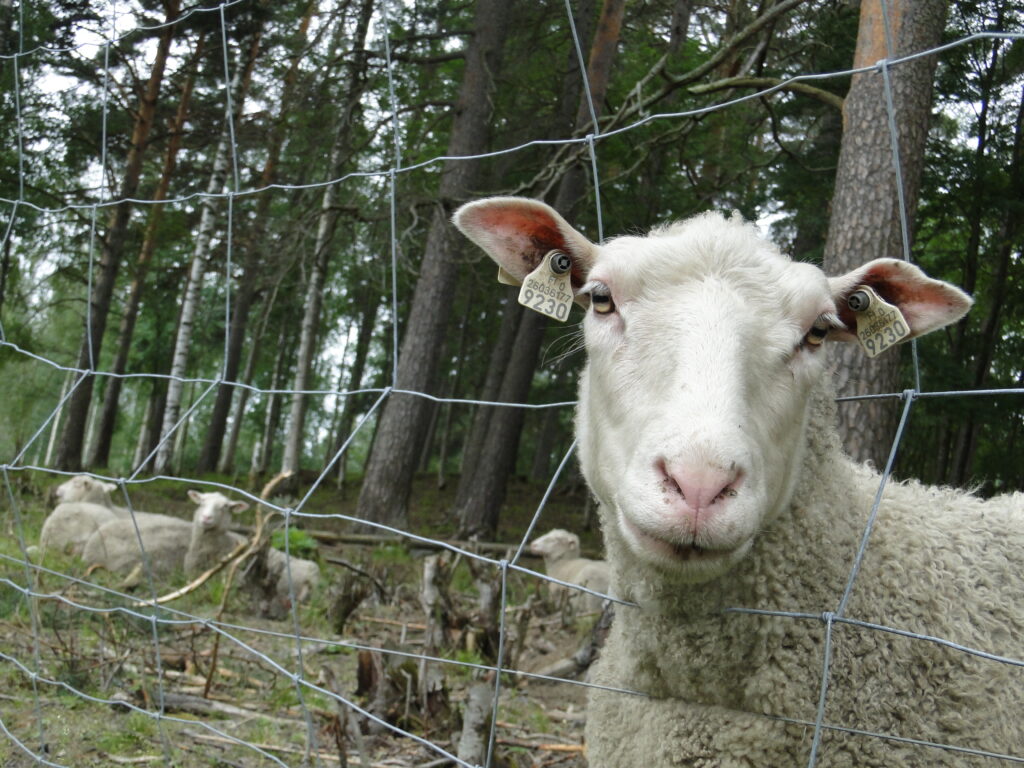
The second grazing season started with 40 sheep, after which the herd was reduced again. In late summer, however, heavy rains caused Himalayan balsam to germinate more aggressively, and around twenty more sheep were brought in to help.
The third grazing season was similar to the previous one, but the difference was that there were no longer sparsely germinated Himalayan balsam seedlings, but plants sprouted mainly in the part of the pasture where tall Himalayan balsam plants had grown and seeded outside the pasture previous summer.
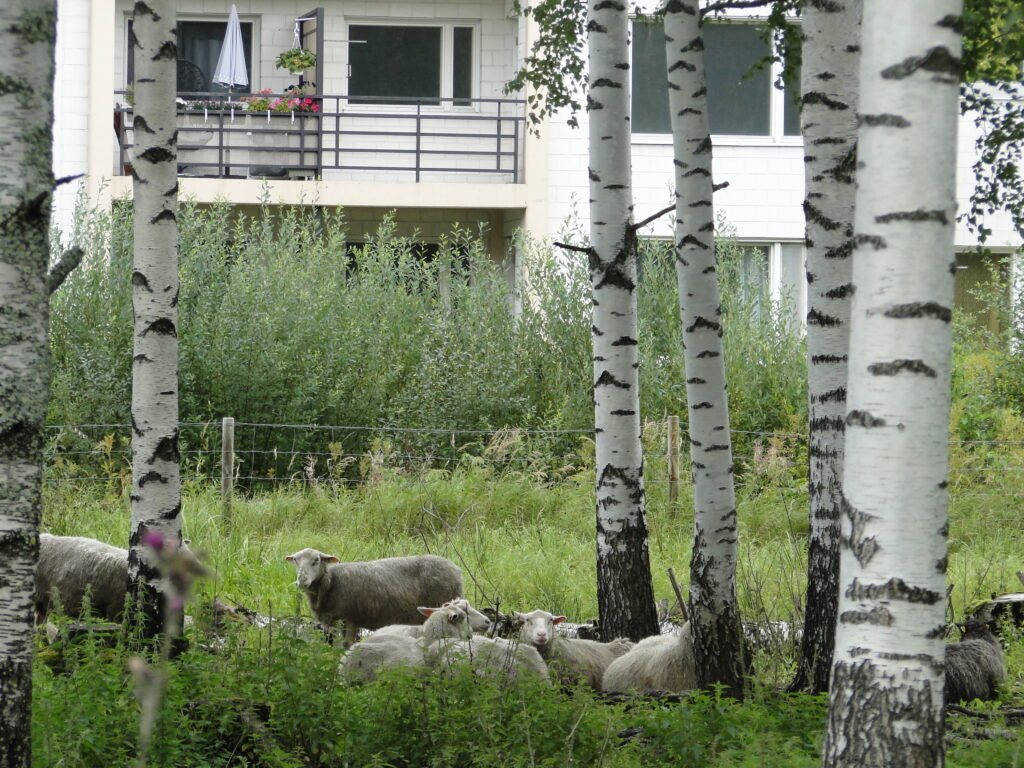
Sheep delight the residents
The project will continue for another two years, after which final conclusions will be drawn on the success of the experiment. The preliminary results indicate that sheep are to some extent helpful in controlling Himalayan balsam, but it is not possible to choose the plants that will grow in place of Himalayan balsam. For example, nettle managed to spread to the freed growth area in the Vehkalampi park because the sheep did not eat it.
However, one of the greatest contributions of the project is the joy it brings to the residents. The residents have enjoyed the presence of the sheep, and the animals have brought a great deal of joy particularly to families with children and daycare groups. The pastures also provide an opportunity for the project to spread awareness of introduced species, and the media, for example, have been interested in the sheep’s duties.
There are plans to continue sheep grazing in the Vehkalampi park even after the end of the project, as the city has received such good feedback from the residents about the grazing.
Further information
VieKas LIFE project – The Finnish Association for Nature Conservation (sll.fi)

